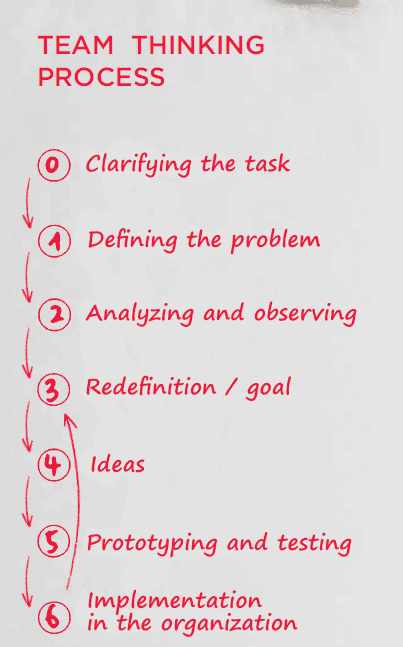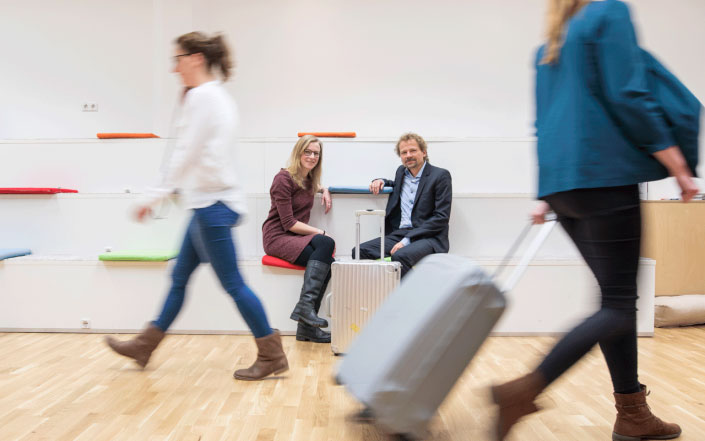The fact is, there’s no way around the subject of digitalization. But what’s it actually about? Which considerations and ways of structuring your organization are necessary? Time for a review!
What do we have already? What do we need? How do we find an individualized solution for our own organization?
Tell me what you’re selling and I’ll tell you how you’re set up. Product = organizational structure?
This is nothing new, but that doesn’t make it less true or important. It’s often possible to predict a company’s organizational structure by looking at its products and services. And it also works the other way around. A company’s structure provides information about its products and services. So far, so good. But digitalization often disrupts this stable relationship. What happens? Either the organization resists digitalization or an acute need for new organizational structures arises.
Tortoise or Hare?
That’s the question. The tortoise and hare model is the best way to describe the dilemma that organizations find themselves confronted with during digital transformation. A tortoise organization is effective, strong, stable and slow in changing course, but not in productivity. A hare organization can quickly and easily change direction. Usually hare organizations are not as effective as tortoise organizations. Each type of organization has a different culture that draws different kinds of people. That’s why the transition from one type of organization to the other often meets with resistance. The transition from hare to tortoise usually happens very gradually, which keeps resistance down. If it has to happen quickly, however, things can get uncomfortable. Digital transformation can also require that a tortoise become a hare. At the same time, it’s also possible for a tortoise to overtake a hare. New, agile startups or startup units are responsible for the necessary and desired disruptive concepts. Digitalization effects virtually every organizational unit and requires close cooperation among everyone involved. What’s the status of interdisciplinary cooperation in your organization and what’s the next step? How do we get from a review of your organization to an individualized model that can be used in practice? Here’s an idea…
Team Thinking Process
For designing and planning the transformation, team thinking can help. Closely related to design thinking, the idea behind team thinking is that self-organized work requires a participative transformation process. The following steps should be drawn up and planned by multidisciplinary teams either company-wide or at the project level. Solutions should be developed that simultaneously address all domains, including “bricks, bytes and behavior” – in other words, the physical and spatial design, technologies and systems, in addition to the way employees work together.
The team thinking process in brief:

Step 0 is about clarifying the task to be undertaken using team thinking. Who’s the client, what needs to be changed, and what are the legal requirements and other conditions for the project? What “why” do we want to address and which of the people who will be effected later do we want to work with?
In step 1 the problem is defined. Considering future users (internal and external customers) the starting position is analyzed independently from the solution. In the next steps, the picture we have becomes more detailed.
In step 2, within the organization people’s actual needs are worked out using observational techniques and archaeology. The needs discovered don’t always correspond to the declared requirements. The problem formulated in step 1 is illuminated in the context of people.
In step 3, the results of step 2 are synthesized to form a vision of the goal. This serves as the starting point for the next steps.
In step 4, ideas are collected for achieving the goal.
In step 5, prototypes are implemented and ideas tested. Solutions are reduced to those that can be realistically implemented given the conditions for the task as clarified in step 0. Ideally, prototypes are tested by people who will be involved with them in the future and adjusted according to feedback.
Step 6 is the iterative, incremental implementation of chosen prototypes in the real environment of the organization and the creation of feedback cycles such as regular retrospectives. The great thing about team thinking is that it can be combined with many other participative methods and techniques, such as New Work, Liberating Structures and Art of Hosting. With team thinking we become less active at the product level and more active at the process and organizational development levels, allowing us to work with those who will be effected by the future implementation – that is to say, the people working in the company.
What does this mean for us?
In order to ensure that a company is well-equipped for the future, adjustments in leadership roles are often needed. When employees work in a self-organizing way and make decisions, classic management positions take on a new role. These roles can range from coach for teams, protector of the self-organizing structure, to legal requirements. At the same time, employees need additional skills in the areas of communication, moderation, conflict resolution, decision making processes, thinking, and acting. Furthermore, organizations need to leave outmoded management practices behind – budgets, individual bonuses, authorizations from superiors, traditional KPIs, wage increases from management… all these things require adequate and timely replacements. And now a question for you: which digital organizational model does your company need?
Find answers to this question and others and experience team thinking by participating in Module 1 of our training “Digital Manager & Practitioner” at oose.

